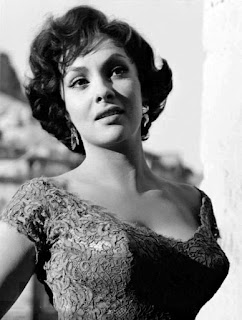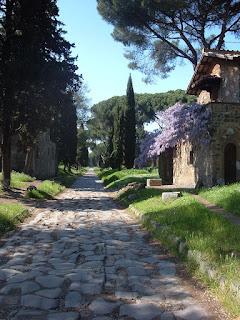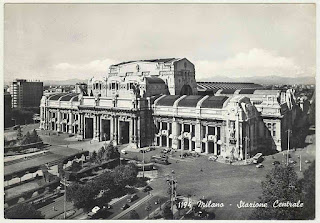Movie star who became photo journalist
 |
| Gina Lollobrigida at the peak of her fame in the 1960s |
At the height of her popularity as an actress in the 1950s and early 1960s she was regarded as a sex symbol all over the world.
In later life she worked as a photo journalist and has supported Italian and American good causes. In 2013 she sold her jewellery collection and donated the money she raised, in the region of five million dollars, to fund stem cell therapy research.
One of four daughters of a furniture manufacturer and his wife, as a young girl, Lollobrigida did some modelling, entered beauty contests and had minor roles in Italian films. She studied painting and sculpture at school and claimed in later life that she became an actress "by mistake".
When she was 20 she entered the Miss Italia competition and came third. The publicity she received helped her get parts in European films but she turned down the chance to work in America after initially agreeing a seven-year contract with the American entrepreneur Howard Hughes. After she refused the terms of her contract, it took nine years for a legal dispute to be resolved.
She received a BAFTA nomination and won a Nastro d’Argento award for her performance in Bread, Love and Dreams (Pane, amore e fantasia), a comedy directed by Luigi Comencini, in 1953. She later starred in the English language film Beat the Devil, which was shot in Italy, and she also worked in the French film industry.
.png) |
| Lollobrigida's looks brought her much work but she was also a talanted actress |
In the 1950s and '60s, her talent and vivacious good looks put her in demand with the major studios and she was cast alongside many of the big box-offices names of the era, including Burt Lancaster, Tony Curtis, Anthony Quinn, Yves Montand, Marcello Mastroianni, Frank Sinatra, Yul Brynner, Sean Connery and Rock Hudson.
More awards came in the shape of a Golden Globe for the romantic comedy Come September (1961), a Nastro d'Argento and David di Donatello awards for the historical drama Venere Imperiale (1962), and a third David di Donatello for another comedy, Buona Sera, Mrs Campbell (1968), which also starred Shelley Winters, Phil Silvers, Peter Lawford and Telly Savalas.
In the mid 1980s her role in the American television series Falcon Crest earned her a Golden Globe nomination. By then, she was making only occasional movie appearances, her last coming in 1997.
At the end of the 1970s Lollobrigida started working as a photojournalist as well as continuing with acting. She obtained an exclusive interview with Cuban leader Fidel Castro and also photographed many famous film stars, as well as publishing a number of books of her photographs.
Married twice, she has one son, Andrea Milko, by her first marriage to a Slovenian physician. In retirement, she divided her time between her country house in Sicily, her home in Via Appia in Rome and her villa in Monte Carlo.
In the mid 1980s her role in the American television series Falcon Crest earned her a Golden Globe nomination. By then, she was making only occasional movie appearances, her last coming in 1997.
At the end of the 1970s Lollobrigida started working as a photojournalist as well as continuing with acting. She obtained an exclusive interview with Cuban leader Fidel Castro and also photographed many famous film stars, as well as publishing a number of books of her photographs.
Married twice, she has one son, Andrea Milko, by her first marriage to a Slovenian physician. In retirement, she divided her time between her country house in Sicily, her home in Via Appia in Rome and her villa in Monte Carlo.
UPDATE: Gina Lollobrigida died in Rome in January, 2023 at the age of 95.
Travel tip:
Subiaco, where Gina Lollobrigida was born, is a town in Lazio, about 40km (25 miles) to the east of Tivoli, alongside the Aniene river. It is famous for its two ancient abbeys, St Benedict’s and Santa Scolastica. The area has had a monastic community since the sixth century. The first printed books in Italy were produced on a printing press set up in the town in the 15th century. Subiaco is also the birthplace of 16th century femme fatale Lucrezia Borgia.
Travel tip:
Gina Lollobrigida’s home in Rome is in Via Appia, the Appian Way, which is one of the earliest and most important of the Roman roads. It connects Rome to Brindisi in southern Italy. The road is named after Appius Claudius Caecus, who directed the construction of its first section in 312 BC after it was deemed that a road was needed to ease the movement of military supplies and troops to and from Rome. Stretching for approximately 400 miles (645km), it was the first long road made for this purpose. Today, following the route is an ideal way to see several major monuments of ancient Rome, including the Tomb of Priscilla, the Catacombs of Callixtus and St Sebastian, the Circus of Maxentius, the baths of Capo di Bove and the Villa dei Quintili. Today a modern road, the Villa Appia Nuova, runs close to the original route, while there are many stretches of the original route preserved, known ad the Villa Appia Antica.
 |
| The Abbey of Santa Scolastica near Subiaco, Lazio, home town of actress Gina Lollobrigida |
Subiaco, where Gina Lollobrigida was born, is a town in Lazio, about 40km (25 miles) to the east of Tivoli, alongside the Aniene river. It is famous for its two ancient abbeys, St Benedict’s and Santa Scolastica. The area has had a monastic community since the sixth century. The first printed books in Italy were produced on a printing press set up in the town in the 15th century. Subiaco is also the birthplace of 16th century femme fatale Lucrezia Borgia.
 |
| Stretches of the original Via Appia are preserved as the Via Appia Antica |
Gina Lollobrigida’s home in Rome is in Via Appia, the Appian Way, which is one of the earliest and most important of the Roman roads. It connects Rome to Brindisi in southern Italy. The road is named after Appius Claudius Caecus, who directed the construction of its first section in 312 BC after it was deemed that a road was needed to ease the movement of military supplies and troops to and from Rome. Stretching for approximately 400 miles (645km), it was the first long road made for this purpose. Today, following the route is an ideal way to see several major monuments of ancient Rome, including the Tomb of Priscilla, the Catacombs of Callixtus and St Sebastian, the Circus of Maxentius, the baths of Capo di Bove and the Villa dei Quintili. Today a modern road, the Villa Appia Nuova, runs close to the original route, while there are many stretches of the original route preserved, known ad the Villa Appia Antica.
Also on this day:
1914: The birth of car designer Giuseppe 'Nuccio' Bertone
(Photo of Gina Lollobrigida by Ivo Lollobrigida CC BY-SA 3.0)
(Photo of the Abbey of Santa Scolastica by Livioandronico2013 CC BY-SA 4.0)
(Photo of Gina Lollobrigida by Ivo Lollobrigida CC BY-SA 3.0)
(Photo of the Abbey of Santa Scolastica by Livioandronico2013 CC BY-SA 4.0)






